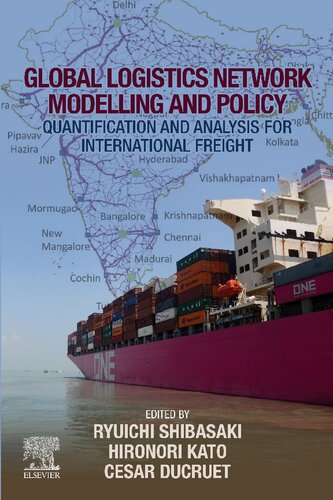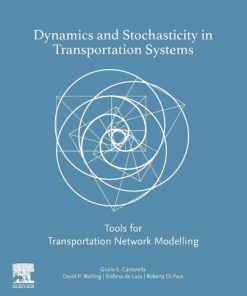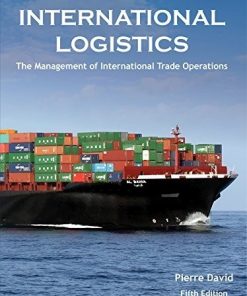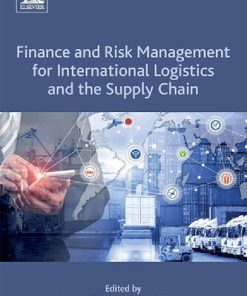Global Logistics Network Modelling and Policy Quantification and Analysis for International Freight 1st edition by Ryuichi Shibasaki, Hironori Kato, Cesar Ducruet 0128140611 9780128140611
$50.00 Original price was: $50.00.$25.00Current price is: $25.00.
Global Logistics Network Modelling and Policy: Quantification and Analysis for International Freight 1st edition by Ryuichi Shibasaki, Hironori Kato, Cesar Ducruet – Ebook PDF Instant Download/DeliveryISBN: 0128140611, 9780128140611
Full download Global Logistics Network Modelling and Policy: Quantification and Analysis for International Freight 1st edition after payment.

Product details:
ISBN-10 : 0128140611
ISBN-13 : 9780128140611
Author : Ryuichi Shibasaki, Hironori Kato, Cesar Ducruet
Global Logistics Network Modelling and Policy provides guidelines on quality policy, covering investments, management and planning for port and hinterland infrastructure, roads, railways and inland waterway ports. The book first describes the authors’ concept and formulation models, followed by a description and analysis of the applied data. As shipping companies fiercely compete in an effort to achieve greater efficiency and impact infrastructure policy and plan for the entire supply chain, they need tactics that drive quality transportation policy and new ways to model and simulate worldwide cargo movements, all while estimating demand and capacity of systems.
Global Logistics Network Modelling and Policy: Quantification and Analysis for International Freight 1st Table of contents:
Part One: General introduction
1: Introduction to global container shipping market
Abstract
Introduction: Containerisation and global logistics
Economic growth and container cargo movements
Port development and terminal operations
Global maritime container shipping
Conclusion
Appendix
2: A global analysis of hinterlands from a European perspective
Abstract
Introduction
Historical origin of European hinterlands
Analysing global hinterlands in a contemporary context
Determinants of hinterland expansion and shrinkage
Variations in port choice behaviour
Conclusion
3: Cross-border logistics practices, policies, and its impact
Abstract
Introduction
Logistics performance and liner shipping connectivity
Trade facilitation, transport facilitation, and cross-border management
Logistics infrastructure investment needs to 2030/2040
Conclusions
Appendix
4: Basics of container demand forecast
Abstract
Introduction
Preparation
Step 1: Cargo attraction and generation
Step 2: Cargo distribution
Step 3: Modal split
Step 4: Route choice
Conclusion
Part Two: Model & Data
5: Basic concept
Abstract
Model concept
Entire structure of model
Other model features and future works
Structure of Part 2
6: Global maritime container shipping model
Abstract
Model framework
Shipping time function
Shipping cost function
Estimation of ocean freight charge
Model performance
Conclusion
7: Intermodal transport super-network model
Abstract
Model framework
Regional land transport submodel
Model calculation and convergence
Conclusion
8: Data [1] maritime container shipping and land transport network
Abstract
Ports: Intersection between MCS and LT networks
Global MCS network
Regional LT network
Conclusion
Appendices
9: Data [2] container shipping demand for the present and future
Abstract
Present demand
Future demand
Conclusion
Appendix
Part Three: Application to the developing world
10: Central America: Small countries with active border-crossing transport on land
Abstract
Introduction
Ports and maritime container cargo movements in Central America
Data
Calculation results
Policy simulations
Conclusion
11: Greater Mekong Subregion: Is the Mekong River shipping competitive with other modes?
Abstract
Introduction
International container transport in Cambodia
Data
Calculation results
Policy simulations
Conclusion
12: South Asia: Impact simulations of logistics projects in India, Bangladesh, and Sri Lanka
Abstract
Introduction
Ports and container cargo flow in South Asia
Data
Calculation results
Policy simulations
Conclusion
13: Central Asia: Typical landlocked region across Eurasian continent
Abstract
Introduction
Gateway seaports and access routes of Central Asia
Data
Calculation results
Policy simulations
Conclusion
14: Pacific Islands: Small and dispersed ‘sea-locked’ islands
Abstract
Acknowledgments
Introduction
Ports and maritime container cargo movement in the Pacific region
Data
Calculation results
Policy simulations
Conclusion
15: Southern Africa: Overcoming corridor and border challenges for landlocked countries
Abstract
Introduction
Regional seaports and land transport
Data
Calculation results
Policy simulations
Conclusion
16: Belt and Road Initiative: How does China’s BRI encourage the use of international rail transport across the Eurasian continent?
Abstract
Introduction
International container railway services to/from China
Data
Calculation results
Policy simulations
Conclusion
People also search for Global Logistics Network Modelling and Policy: Quantification and Analysis for International Freight 1st:
global logistics companies
is global logistics a real company
global logistics network
logistics network modeling
global logistics news
Tags: Global Logistics, Network Modelling, Policy, Quantification, Analysis, International Freight, Ryuichi Shibasaki, Hironori Kato, Cesar Ducruet
You may also like…
Uncategorized
Network Analysis and Synthesis 2015th Edition by Bhattacharya 9332542856 978-9332542853
Business & Economics - Economics
Computers - Computers - General & Miscellaneous
Mathematics
The Politics of Modelling Numbers Between Science and Policy 1st Edition Andrea Saltelli
Uncategorized
Politics & Philosophy
Computers - Networking












